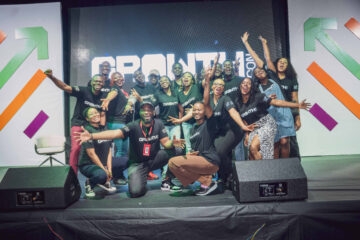With 82.90 million internet users, Pakistan ranks 90 out of the 120 countries in the Inclusive Internet Index, commissioned by Facebook and conducted by the Economist Intelligence Unit. What does that mean for the people, especially youth and women, of Pakistan? Women are constantly at a disadvantage with both the low levels of connectivity and the magnitude of the connectivity gap between men and women.
But it’s not just the connectivity issue. According to the GSMA Mobile Gender Gap Report 2022, more than 3.2 billion people in low- and middle-income countries (LMICs) access the internet on a mobile phone. But in Pakistan, only 52% of the adult female population owns a mobile phone, with an even lower percentage of 21% of Pakistani women using mobile internet. This is not just about the lack of resources, there are other socio-economic barriers like cultural differences, low education rates in women compared to men, language barrier and internet safety that contribute to this difference.
This stark difference surfaced completely, and its impact was observed thoroughly when the world switched to virtual means of work and education. Women, who have low knowledge and experience in navigating the internet, still find it extremely difficult to make their way through these already challenging times. In turn, women and girls are likely to suffer in terms of both employment and study.
Why is it important for women to be online?
While there is an importance of diversity in online spaces, access to online resources to women is more important. Following are a few ways that access to the internet can help bridge the gap for women:
Education: Women and girls, especially in countries like Pakistan and other parts of the world, are often deprived of educational opportunities due to a lack of separate schools with respect to cultural barriers. Distance to the school from their homes has been highlighted as another issue. Through access to online schools, girls and women can get educated without having to leave their houses. This is not just limited to the conventional education but also to the specialised training.
Business: Through specialised training and education, skilful women can set up their businesses online. They can connect with communities from across the world and become an active contributor to the economic GDP. The post-COVID world has seen a rise in online businesses and through a venture of their own, women can get once step closer to financial independence.
Resources: COVID-19 was an eye-opener for the whole world with most of the resources being online. The pandemic also gave a boost to e-commerce platforms that changed our lives forever. In addition to that, safety, health, and other resources being available online is a great help to everyone and women having access to those can increase their independence and safety.
Community: The whole world is connected online. Being online can help women get connected with each other and form and community and support system of their own.
What can we do to bridge the gap?
Women around the world face a different set of challenges that result in a lack of access to online resources for them. While there is no one solution fit all, following are a few practices that can add to the efforts in bringing more women online:
Internet in education: Introducing knowledge and use of the internet in early education at schools can help educate girls in creating their digital footprint.
Specialised training: Through specialised training around digital literacy and social media for business, women can be empowered to set up their businesses online.
Cyber security: Women and especially girls often hesitate from being online due to safety issues. Developing policies to ensure cyber security for all users and providing resources to report unethical behaviours can provide the confidence they need to participate online.
The way forward:
Women empowerment is a collective of social issues that can be resolved with active efforts being made in bridging the gap. Access to the internet and online resources is bound to improve not just the online participation of women leaders from across the world but also their financial and social independence. Special programs, policies and a focus on bringing more women into the online ecosystem will help improve the statistics.



